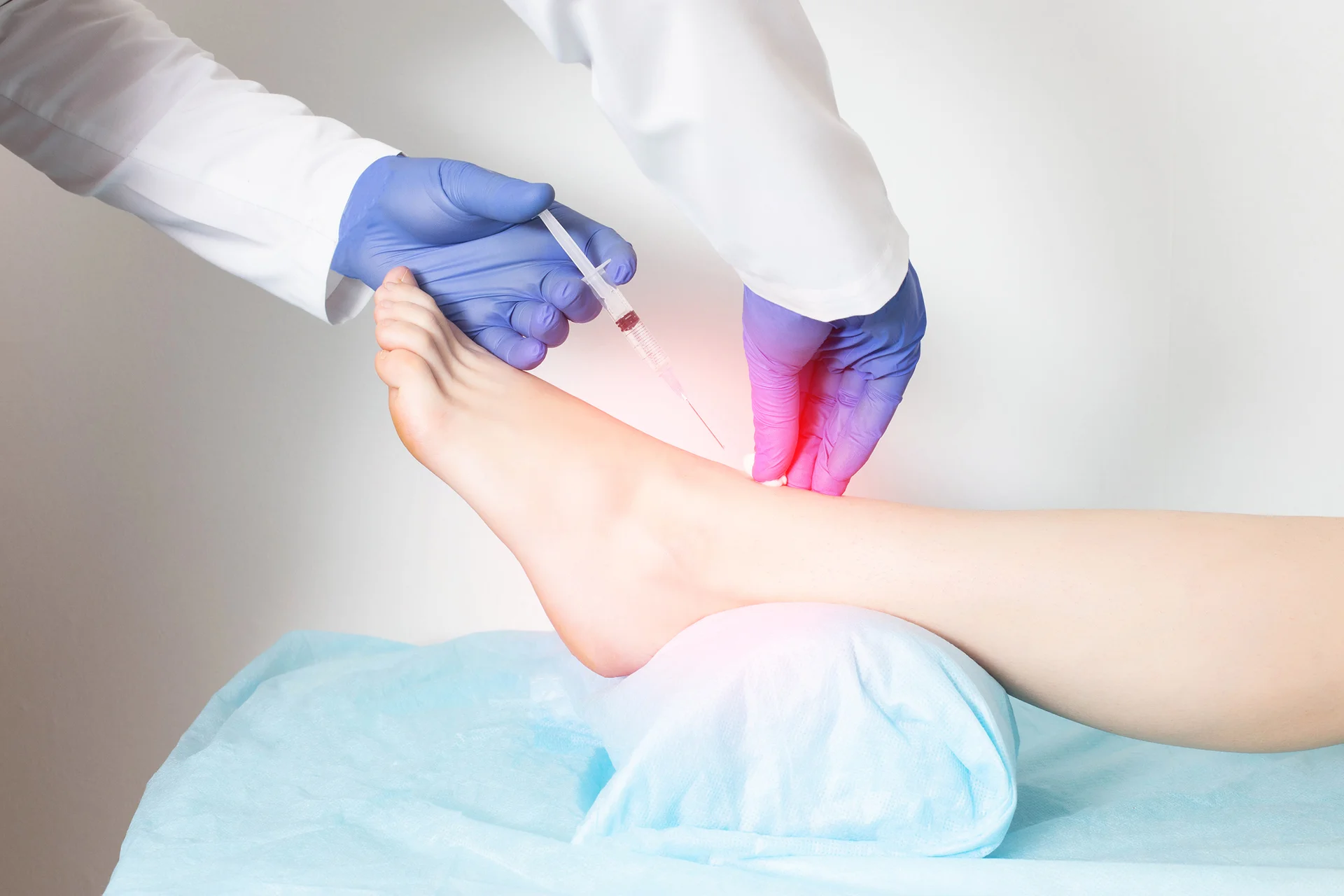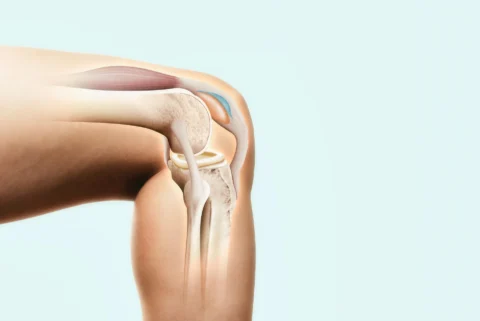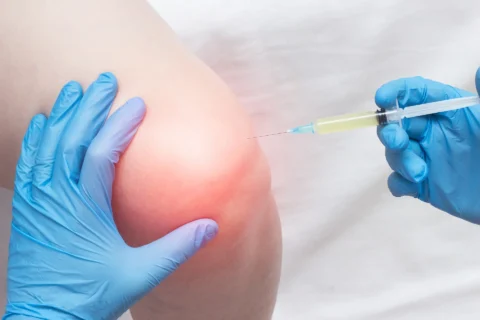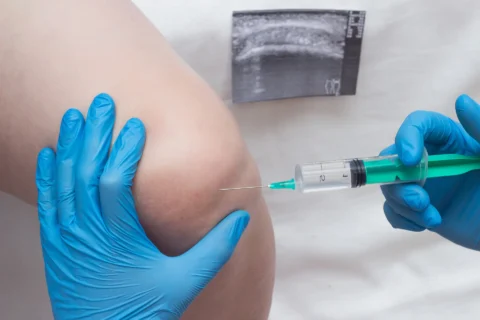Regenerate Your Ankle Joint with Stem Cell Therapy: A Guide to Relief and Recovery
Stem cell therapy is an innovative treatment that utilizes stem cells to repair damaged joint tissues and reduce inflammation.
For ankle injuries, it offers the potential to accelerate healing, avoid surgery, and restore mobility.
Stem cells are master cells that can differentiate into specialized cell types. When injected into an injured ankle joint, they can regenerate bone, cartilage, tendons, and ligaments.
This makes stem cell therapy a promising option for various ankle conditions.
Understanding Stem Cell Basics
What are stem cells and why are they important for ankle recovery?
Stem cells are undifferentiated cells that have the ability to develop into many different cell types in the body.
This ability to self-renew and differentiate makes them critical for ankle recovery. When injected into an injured ankle, stem cells can replace damaged cells and tissues, potentially restoring function.
Stem cells exhibit anti-inflammatory and regenerative properties that facilitate healing. They migrate to the injury site and stimulate recovery by secreting growth factors and cytokines. This makes stem cell therapy a compelling treatment option for ankle pain and immobility.
Common Ankle Conditions Treated by Stem Cell Therapy
How can stem cell therapy help with ankle ligament damage?
Ankle sprains that over-stretch or tear the ligaments are common injuries.
Stem cell therapy can minimize ligament scarring and facilitate regrowth of normal, functional tissue. Stem cells reduce inflammation, while growth factors promote new blood vessel and tissue formation.
In patients with chronic ankle instability from ligament tears, stem cell injections can stabilize the joint by repairing and strengthening the damaged ligaments. This avoids the need for reconstructive surgery in many cases.
Is stem cell therapy an effective solution for ankle joint repair?
Yes, stem cell therapy shows promise in repairing ankle joints affected by osteoarthritis. In arthritic joints, protective cartilage is worn away, causing painful bone-on-bone rubbing.
Stem cells can regenerate cartilage to restore cushioning and mobility. Stem cell therapy may be an alternative to ankle replacement or fusion surgery.
What role does stem cell therapy play in treating ankle degeneration?
The anti-inflammatory effects of stem cells can slow degeneration of joints, tendons, and ligaments in the ankle.
Stem cells suppress immune factors that aggravate tissue damage while delivering growth factors to stimulate tissue regrowth and healing.
In degenerative tendinopathy, stem cell injections may help reactivate and recruit the body’s endogenous stem cells to repair deteriorating tendon tissue. This regenerative capacity could help patients avoid surgery and prolong joint function.
How can stem cell therapy aid recovery from foot and ankle conditions?
Stem cell therapy shows potential for addressing various foot and ankle conditions beyond the ankle joint.
In plantar fasciitis, stem cell injections can reduce heel inflammation and help regenerate damaged tissue. For Achilles tendonitis, stem cell therapy may facilitate tendon remodeling and repair.
Stem cells injections have also proven beneficial for recovery from sports-related foot injuries, metatarsal fractures, and bunions. The anti-inflammatory effects accelerate return to activity by restoring function and pain-free mobility.
The Process and Efficacy of Stem Cell Therapy
What does stem cell therapy for ankle conditions involve?
The process starts with harvesting the patient’s stem cells, often from bone marrow or fat tissue. These cells are then isolated and purified in a lab before being injected into the injured ankle area. Ultrasound or fluoroscopy imaging ensures proper placement.
Single or multiple injections may be performed over weeks or months to optimize dosing. Most patients require minimal downtime after the outpatient procedures. They can quickly return to daily activities as the stem cells begin regenerating tissue.
How effective is stem cell therapy in treating soft tissue damage in the ankle?
Growing evidence demonstrates stem cell therapy can effectively treat soft tissue injuries like tendon tears and ligament sprains in the ankle. Injected stem cells decrease inflammation and fibrosis while secreting growth factors to stimulate tissue regeneration.
In one study of patients with soft tissue injuries, the majority achieved good outcomes with improved mobility and significantly less pain after stem cell injections. Only a small fraction required eventual surgery, underscoring the therapy’s benefits.
Can stem cell therapy provide relief for ankle pain caused by plantar flexion?
Yes, stem cell therapy shows promise in alleviating chronic ankle pain related to plantar flexion or pointing the foot downward. This motion places stress on the Achilles tendon and ankle joint.
In multiple studies, stem cell injections reduced inflammation and repaired degenerated tissues caused by excessive ankle plantar flexion. Patients experienced decreased pain, increased range of motion, and improved function. The therapy provided lasting relief and helped avoid surgery.
Specialized Applications of Stem Cell Therapy
How is stem cell therapy utilized for ankle tendonitis?
Tendonitis causes ankle pain and stiffness from tendon inflammation. Injecting stem cells into the injured tendon delivers anti-inflammatory and regenerative benefits directly to the site.
Stem cells differentiate into tenocytes to repair damaged tendon fibers. Growth factor secretions increase vascularity and stimulate new tissue growth, promoting complete healing.
This makes stem cell therapy a promising alternative to prolonged conservative treatment or surgery.
In what ways can stem cell therapy benefit ankle joints specifically?
The unique characteristics of stem cells make them well-suited to repairing ankle joints through various mechanisms:
- Forming new cartilage to restore cushioning and elasticity
- Reducing inflammation that aggravates joint degeneration
- Releasing growth factors that stimulate tissue regeneration
- Differentiating into bone cells to mend fractures or defects
- Improving lubrication for smooth joint mobility
- Withstanding joint pressure through new tissue growth
- Protecting existing tissues from further damage
These targeted actions enable stem cells to comprehensively restore ankle joint function and integrity.
Clinical Evidence for Stem Cell Therapy
What are the latest findings from stem cell therapy trials for ankle arthritis?
While stem cell therapy holds promise for treating ankle arthritis, it’s important to note that research specifically focused on the ankle remains limited. Most studies have explored its use for knee osteoarthritis, and more targeted investigations for the ankle are needed.
Promising Findings and Areas for Continued Exploration
- Meta-analyses indicate that mesenchymal stem cell therapy, delivered via injection, can reduce pain and improve outcomes for degenerative joint conditions like osteoarthritis.
- Studies on knee osteoarthritis suggest stem cell therapy has a favorable safety profile, with positive results in pain relief and function.
- Dedicated clinical trials are crucial for establishing the safety and effectiveness of stem cell therapy specifically for ankle arthritis.
- Another study found osteochondral lesion size decreased significantly 6 months after stem cell treatment. Cartilage quality also improved, with 60% achieving nearly normal scores.
These findings indicate stem cell therapy can improve pain and function in ankle arthritis for extended periods, slowing disease progression. More research is underway to optimize treatment.
Can stem cell therapy offer long-term relief for ankle pain?
Yes, studies show stem cell therapy provides long-term relief by durably repairing damaged ankle tissues. In trials of patients with ankle arthritis and tendinopathy, significant pain reduction and functional improvements persisted for years after treatment.
A vast majority of arthritis patients maintained satisfactory outcomes 3 years after stem cell injections. Tendinopathy patients reported stable improvement in symptoms lasting over 2 years post-treatment. Stem cell regeneration of injured ankle structures translates to lasting benefits.
Considerations and Potential Risks
What should individuals know before considering stem cell therapy for ankle issues?
Patients should understand that:
- Stem cell therapy is still investigational, with somewhat limited data on long-term efficacy
- Multiple treatments over weeks or months may be needed for full benefit
- Physical therapy is part of rehabilitation and optimizing outcomes
- All risks and limitations of the treatment must be reviewed with the provider
Patients need to weigh potential risks like infection and lack of improvement vs benefits like avoiding surgery before proceeding. Providers should clearly communicate realistic expectations.
Are there any risks associated with using stem cell therapy for ankle pain?
Stem cell therapy is considered safe with minimal risks in most patients but potential adverse effects can include:
- Infection or reaction at the injection site
- Joint pain or stiffness after treatment
- No improvement in symptoms
- Progressing damage if the underlying condition is not properly diagnosed
Risks appear relatively low when procedures are performed correctly by experienced providers. Still, patients should be aware of potential complications before treatment.
The Future of Stem Cell Therapy for Ankles
What is the future outlook for stem cell therapy in treating ankle conditions?
The future is bright for stem cell-based therapies to treat ankle injuries, arthritis, tendonitis, and other conditions. Rapid advances are being made as researchers build understanding of optimal cell sourcing, delivery methods, dosing, and more.
With continued progress, stem cell therapy is expected to become a mainstream treatment option with consistent and durable results.
Wider adoption will occur as more clinical data demonstrates safe and effective long-term outcomes. Regenerative medicine offers exciting new possibilities for restoring ankle function and mobility.
Conclusion
Stem cell therapy represents a potentially transformative approach for healing damaged ankle tissue caused by injuries, arthritis, overuse, and other conditions.
Compelling evidence indicates stem cell injections can reduce inflammation, regenerate cartilage and bone, repair ligaments and tendons, and restore function in the ankle joint and surrounding structures.
This innovative treatment may enhance recovery, eliminate pain, and avoid invasive surgery in properly selected patients.
Continued research and clinical studies will further optimize stem cell therapy protocols and cement its role in relieving ankle conditions.











